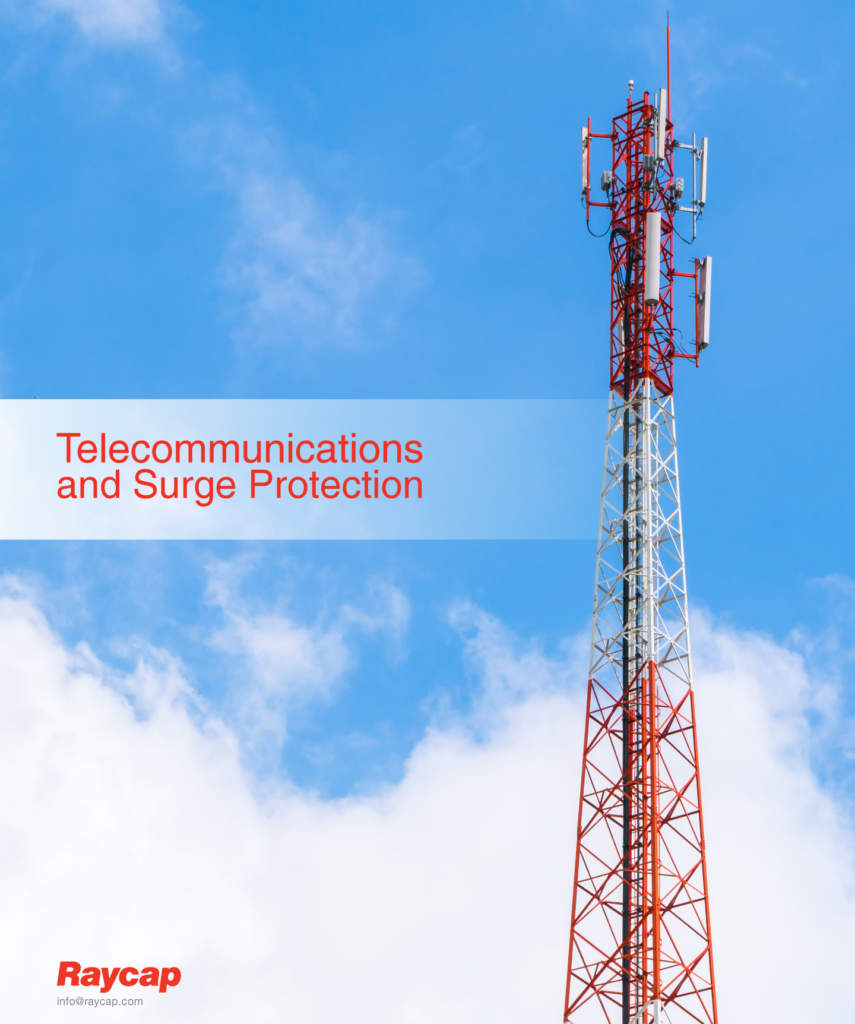Guarding Telecom Networks: Surge Protection Devices Shield Against Power Surges
In the ever-evolving telecommunications industry, uninterrupted connectivity is paramount. As people’s reliance on data transmission and communication networks grows, so does the vulnerability of these networks to electrical disturbances, particularly power surges. Power surges caused by lightning strikes, grid faults, or equipment malfunctions can wreak havoc on telecommunications infrastructure, leading to costly downtime, equipment damage, and compromised service quality. Surge protection devices (SPD) have emerged as the critical solution to safeguard telecommunications equipment from the detrimental effects of power surges.
Surge protection devices, commonly known as surge protectors or lightning arrestors, are devices engineered to divert excess voltage caused by power surges away from sensitive equipment. The SPD acts as the first line of defense, offering a low-resistance pathway for the surge current, thus protecting the telecommunications equipment and preventing damage. These devices are installed at various points in the network, including at the main power entrance, distribution panels, and individual equipment levels.
The telecommunications industry relies on an intricate network of communication equipment, including routers, switches, servers, and fiber optic cables. The delicate electronic components within these devices are highly susceptible to voltage spikes, which can lead to malfunctions, data loss, and equipment failure. Lightning strikes are one of the most potent external threats to telecommunication networks. A single lightning strike can introduce massive surges into the power grid or couple onto nearby cables leading into telecom sites, causing extensive damage to equipment. Fluctuations in the power grid, resulting from utility switching, transformer failures, or grid faults, can cause power surges that travel through the network. Equipment within the network can generate internal power surges, especially during power cycling or when high-powered devices are turned on or off.
Surge protection devices offer myriad benefits to the telecommunications industry, ensuring reliable and uninterrupted connectivity. The primary benefit of surge protection devices is the protection they provide to sensitive electronic equipment in telecommunications installation. By diverting the excess energy from lightning surges, the surge protective devices prevent equipment damage and extend the lifespan of costly devices. This protection translates to operating expenses (OPEX) savings, as they reduce the need for frequent equipment replacements or expensive tower climbs to repair or replace equipment. Telecommunication networks need to function 24/7, serving a diverse range of customers and applications. Surge Protective Devices (SPD) enhance network reliability by minimizing the risk of service disruptions caused by power surges. The continuous operation of the network leads to improved customer satisfaction and reduced business losses due to downtime. The implementation of surge protection devices lowers maintenance costs in the long run. With SPDs in place, equipment failures due to power surges will be significantly reduced, leading to lower maintenance expenses and increased network uptime. Data is the lifeblood of the telecommunications industry. Surge protection devices safeguard critical data from being lost or corrupted due to equipment failures caused by power surges. This protection is crucial for industries that handle sensitive information, such as healthcare and finance. In addition to protecting equipment, SPDs preserve the quality of telecommunication services. Voltage spikes can lead to signal distortion and poor call quality. Surge protection devices maintain the integrity of voice and data transmissions by ensuring stable power to the equipment. Power surges can pose safety hazards to personnel and customers interacting with telecommunications equipment. Surge protection devices reduce the risk of electrical accidents, ensuring a safe environment for users and technicians.
The telecommunications industry employs various types of surge protection devices, each catering to specific applications and equipment protection requirements.
For example:
Choosing the appropriate surge protection devices is critical to the effectiveness of a telecommunications network’s protection strategy. The surge protection rating per international standards bodies like IEC, EN, or UL indicates the device’s capability to handle surges. The let-through voltage indicates how well the surge protector will protect the equipment, the lower the let-through, the greater the protection. The response time of the SPD determines how quickly it can react to a surge. Lower response times provide better protection. Identifying critical points within the network, such as entry points and sensitive equipment, helps determine where SPDs should be installed. Coordinating the surge protection devices throughout the network ensures optimal protection and prevents redundancy.
Compliance with industry standards and regulations is essential when implementing surge protection devices in the telecommunications industry. The Institute of Electrical and Electronics Engineers (IEEE) publishes a series of standards for surge protection in low-voltage power circuits. Other standards include:
The UL 1449 standard outlines requirements for surge protective devices in various applications, including telecommunications. IEC 61643-11, EN 61643-11, IEEE C62.11, IEEE C62.41.2, IEEE C62.45 all have published rules for industrial surge protection use.
As telecommunications networks continue to evolve, so does surge protection technology. Advancements in SPD design and their integration with smart networks will continue as 5G and next-generation networks are built.
Surge protection devices play a vital role in safeguarding the telecommunications industry from the detrimental effects of power surges. SPDs ensure uninterrupted connectivity and high-quality service delivery by protecting equipment, enhancing network reliability, and reducing maintenance costs. As the telecommunications industry continues to innovate, investing in robust surge protection strategies will remain indispensable for ensuring the seamless transmission of data and communication in our interconnected world.

